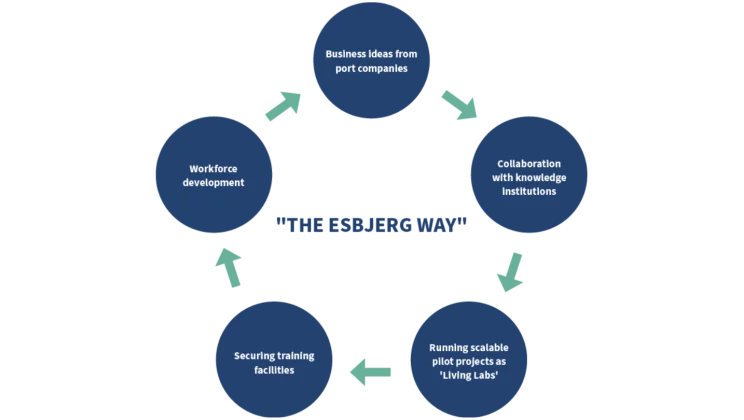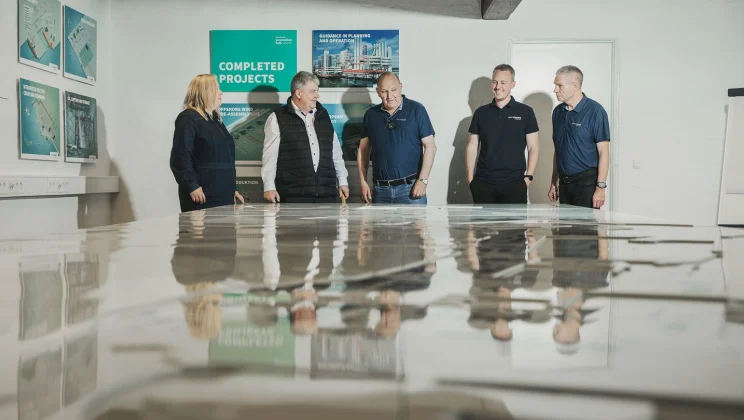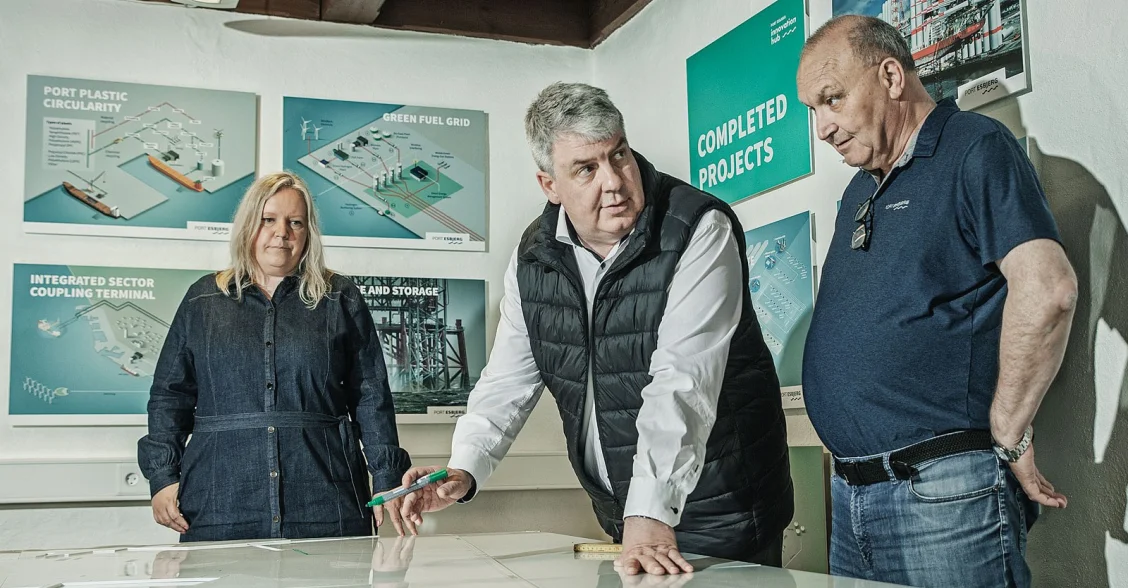In the historic Fiskepakhus at Port Esbjerg, good ideas gain momentum. The new Port Esbjerg Innovation Hub will be a forum for the port’s companies, which will come together to develop, rethink and test new solutions and business ideas. Collaboration is crucial in view of the complex challenges of today, and the new hub will provide access to an exclusive club of European ports.
For more than 150 years, Port Esbjerg has been a hub for innovation and development. Long before anyone used the word ‘innovation’ in Denmark.
Throughout the twentieth century, the port was Denmark’s largest fishing port. This was before oil was discovered in the North Sea and focus shifted during the ensuing decades in step with new business opportunities. Around the turn of the millennium, the companies at the port began redirecting their attention from black to green energy. Denmark’s first large-scale offshore wind farm, Horns Rev I, was completed in 2002. As we all know, the rest is history, and Port Esbjerg is now home to the Danish offshore industry and an international multimodal transport hub.
So, what is the common thread in the shift from prawn trawlers to oil and eventually to wind turbines? Well, the companies at the port have constantly changed, challenged themselves and evolved through collaboration, knowledge sharing and innovation.
“With our new innovation hub, we create the necessary framework for testing and developing new solutions together with the companies at the port to help solve the challenges we face. With this hub, we are adding a new chapter to our strong innovation history in Esbjerg,” says Dennis Jul Pedersen, CEO of Port Esbjerg.

Port Esbjerg’s approach to testing, developing, and innovating the port’s and companies’ operations.
”The Esbjerg Way”
The new innovation hub is located in the historic ‘Fiskepakhus’ at the port. Here, innovative ideas are turned into reality through close collaboration between the port’s companies, educational institutions and other stakeholders. Through a wealth of different activities and formats, including hackathons (short intensive events focusing on collaboration and problem-solving), workshops and seminars, the companies at the port test, develop and scale solutions to specific challenges in their operations.
The hub builds on 'the Esbjerg way’ model – an approach to innovation and learning, where business ideas generated by the companies at the port are translated into knowledge, tested in practice and developed into new competencies.
The process begins with the companies’ ideas and needs and then continues with knowledge institutions contributing research and technical insight. Next, experiments are carried out in so-called ‘living labs’, where solutions are tested in realistic settings at the port. The results are used to mirror the facilities with the requested labour, so that the competencies match the needs of the industry at all times. The circle is closed when the new knowledge generates even more business ideas.
By bringing together companies, research environments and educational institutions in specific innovation processes, an ecosystem for green and practical solutions is created – from shore-to-ship power and energy-efficient operations to smarter use of resources, among other examples.
The approach is based on the awareness that the complex challenges of today can only be addressed jointly. But for the solutions to get past the drawing board, the right framework for collaboration, training and innovation is required. This is precisely what Port Esbjerg Innovation Hub delivers.
Read more about "The Esbjerg Way" and the new innovation hub

Port Esbjerg’s CEO, Dennis Jul Pedersen, together with several colleagues in the Fiskepakhuset building, looking at a map of the port’s areas.
Common challenges, common solutions
Many businesses work to solve the same challenges, but from different angles and often on their own. But that must change, and the new hub will help with that, says Port Esbjerg CEO Dennis Jul Pedersen:
“The challenges faced by the companies at the port are too complex to be solved by any single company. The green transition, new technology and solutions and qualified labour are all major challenges that require collaboration and the willingness to think outside the box. Fresh innovative ideas may be used at the individual ports and also shared internationally,” he says.
Indeed, the possibility of sharing innovative solutions with other port partners is of crucial importance. Port Esbjerg has always been characterised by strong collaboration and knowledge sharing across the European ports, and with the new innovation hub, Port Esbjerg has become a member of the global Port Innovators Network.
“Collaboration with ports around the world is essential. By becoming a member of the Port Innovators Network, Port Esbjerg is now part of an international community of ports that constantly aim to improve through new solutions. This is of great value to us,” Jul Pedersen explains.
The network has seven members from Europe, North America and South America that can use the network to share challenges, opportunities and solutions.
Go to overview

